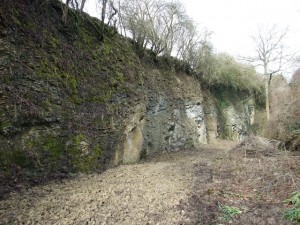
Hobbs Quarry, Longhope
Geological overview
Hobbs Quarry contains a rare exposure of fossilised reefs that formed in a warm, shallow sea during the Silurian period. Today the remains of these coral reefs and the sea creatures that lived over 400 million years ago are preserved as fossils in the limestone
The fossilised reef-like mounds are called bioherms (known to the quarrymen as ‘ballstones’) with their associated sinuous drapes of overlying limestones. These are unbedded, very fine-grained limestones deposited by calcareous algae.
Also found are corals, such as Halysites, Favosites, Heliolites. Stromatopriods are often found in growth position as part of the bioherms.
Location
Longhope, Gloucestershire; Grid Reference: SO 6942 1938
Access
Open
Geological Age
Silurian – Much Wenlock Limestone Formation
Rock Types
Sedimentary – limestone, shale, mudstone
Features
Bioherms
Fossils
Stratigraphic sequence
Variable lithologies
Sedimentary structures
Nature Reserve (Gloucestershire Wildlife Trust)
Interpretation
Interpretation board on-site
Hobbs Quarry trail leaflet
Huntley, Longhope and Hobb’s Ridge trail guide



